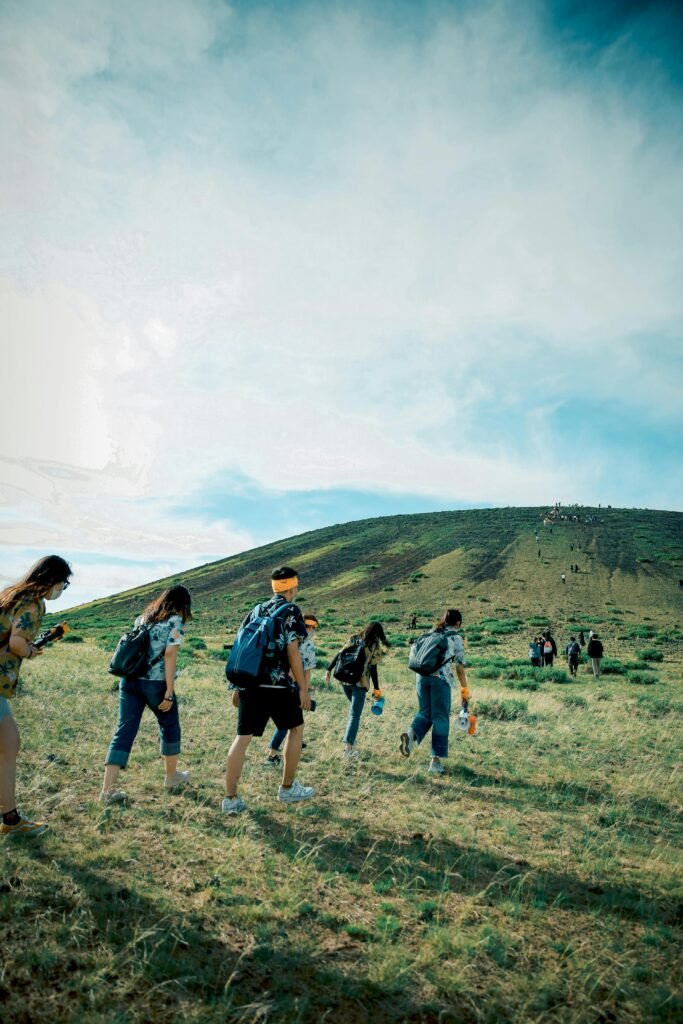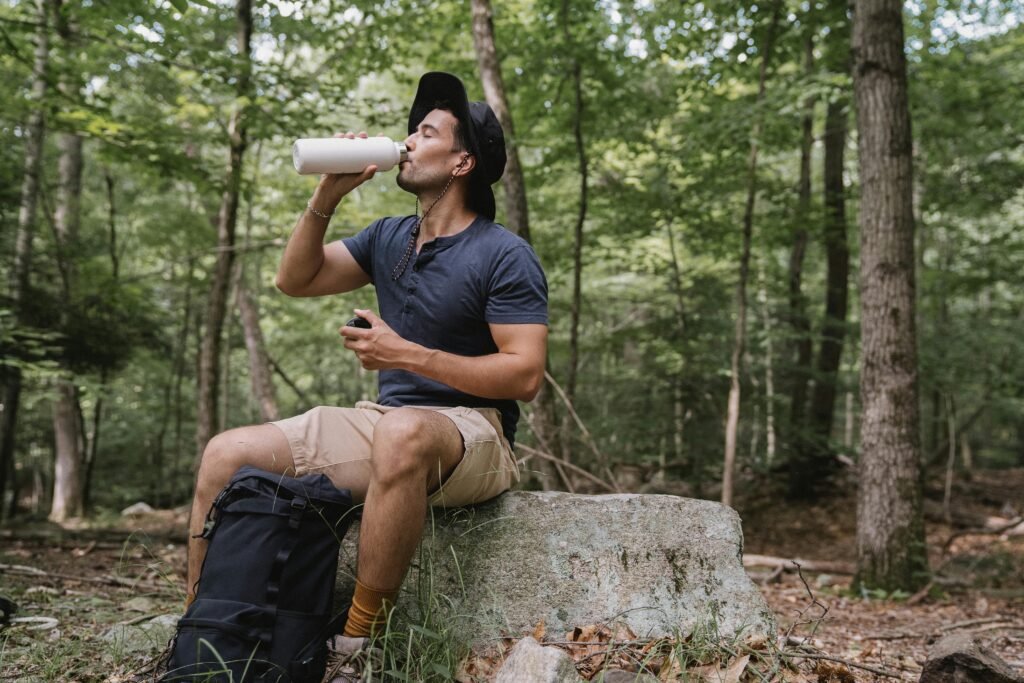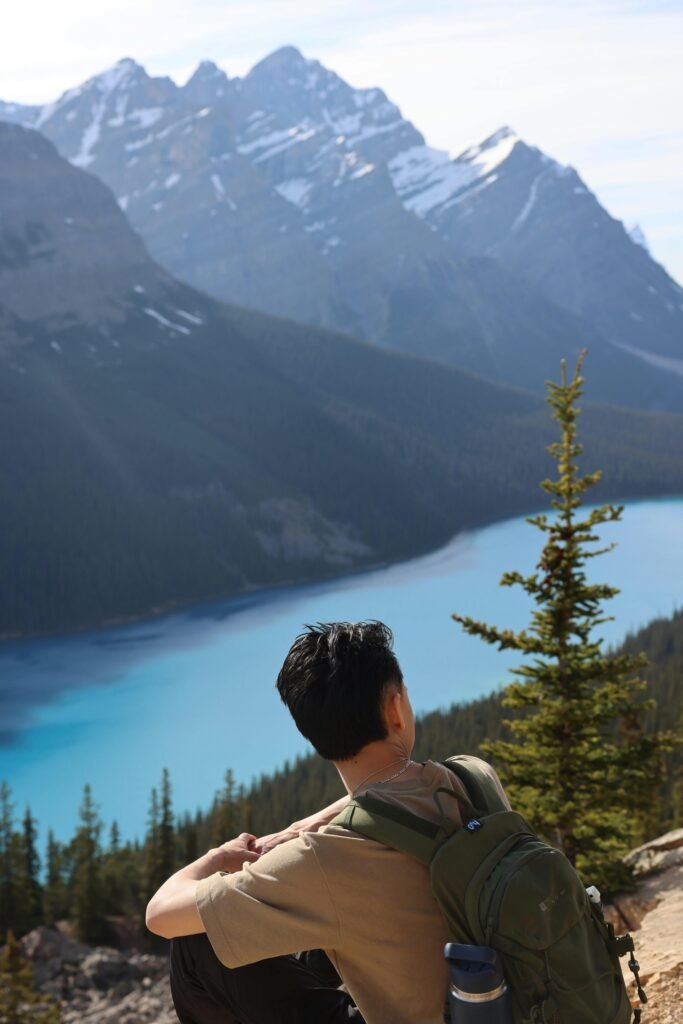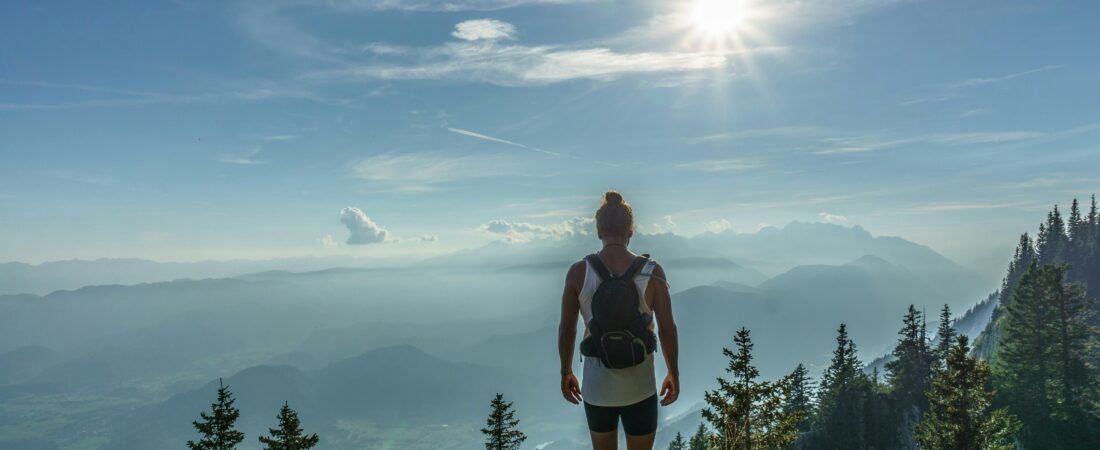Last updated: July 2025
Your Ultimate Guide to Summer Hiking Safety
When the sun is shining and the trails are dry, it’s the perfect time to lace up your boots and head out. But hiking in hot weather isn’t just about sunshine and views—it comes with real risks if you’re not prepared. From heat exhaustion to sunburns and dehydration, hot weather hiking demands a little extra planning and know-how.
In this guide, we’ll cover the best safety tips, essential gear, and hydration strategies to help you stay cool, comfortable, and safe on the trail.
Table of Contents
*This post may contain affiliate links. If you use them, I may earn a small commission at no extra cost to you.
Why Summer Hiking Safety Matters
Let’s be real—hiking in the heat can sneak up on you. You feel great one moment, and suddenly you’re dizzy, sweating bullets, and wondering why your water bottle’s already empty. Overheating is no joke – people actually die from heat. But with the right mindset and preparation, summer hiking can be one of the most rewarding trail experiences.
Quick stat: According to the National Park Service, heat-related illnesses are among the top causes of emergency rescues during summer.
1. Start Early or Go Late
Beat the heat by starting your hike early in the morning (think: sunrise) or later in the evening when the sun isn’t as intense. Midday sun, especially between 10 a.m. and 4 p.m., is when temperatures peak.
Personal tip: I once started a canyon trail at 11 a.m.—bad idea. By 1 p.m., the rocks felt like ovens. Since then, I aim to hit the trailhead by 6:30 a.m. during hot months.
2. Choose the Right Trail
Not all hikes are created equal. When temperatures soar, pick a trail that’s:
- Shaded (look for forested paths or canyons)
- High elevation (cooler temperatures)
- Shorter and less strenuous than your usual hikes
Best trail types for hot days:
- Waterfall trails
- River loops
- Tree-covered ridgelines

3. Dress for the Heat: Lightweight, Light-Colored, and Breathable
Your clothing can make or break your summer hiking experience. On many hot weather hikes temperature changes can be quite dramatic (especially in the evening or reaching higher altitudes), so it is good to be prepared for layering your clothes.
Wear:
- Moisture-wicking shirts (synthetic or merino wool. Avoid cotton!)
- Ventilated hiking shorts or pants
- Wide-brim sun hat or a breathable cap with a neck flap
- Sunglasses with UV protection
Recommended items:
- Columbia Silver Ridge Lite Shirt – lightweight, breathable, and UPF-protected
- Sunday Afternoons Ultra Adventure Hat – excellent coverage and ventilation
- Columbia Silver Ridge Convertible Pants – ideal for adjusting to temp changes
4. Hydration Is Everything

Rule of thumb: Drink at least ½ liter (16 oz) per hour of hiking in the heat. (You can try this water for hike calculator)
Hydration Tips:
- Pre-hydrate before the hike (drink water before you leave home)
- Use a hydration bladder like a CamelBak Crux Reservoir so you can sip frequently
- Pack electrolytes (like Nuun, Liquid I.V., or even salty snacks)
- Consider freezing a bottle overnight for cold water mid-hike
Warning sign: If you stop sweating, feel dizzy, or get a headache, you may already be dehydrated.
Read more on hydration: Hiking Hydration Guide: How Much Water Do You Need on the Trail?
5. Take Frequent Breaks in the Shade
Rest often, especially if you’re sweating heavily. Look for shade every hour or so and take 5–10 minutes to cool down and assess how you’re feeling.
Pro tip: Wet a small towel or buff, wrap it around your neck, and let evaporation work its magic.

6. Know the Signs of Heat-Related Illness
Heat Exhaustion Symptoms:
- Heavy sweating
- Dizziness or faintness
- Nausea
- Muscle cramps
Heat Stroke (Serious Emergency):
- Dry, red skin (no more sweating)
- Confusion
- Seizures
- Unconsciousness
If in doubt: Stop, cool down, and seek help. Heat stroke is life-threatening.
7. Sun Protection: Don’t Get Burned
Even on a short hike, UV exposure adds up fast.
Essentials:
- SPF 30+ sunscreen, reapplied every 2 hours
- Lip balm with SPF
- UPF-rated clothing for arms and legs
- Sunglasses with full UV protection
Favorite sunscreen picks:
8. Pack Smart: Hot Weather Hiking Essentials
Here’s a summer-specific version of your hiking checklist:
✅ Hydration bladder & backup water bottle
✅ Electrolyte tablets or salty snacks
✅ Wide-brim hat
✅ Light, moisture-wicking clothes
✅ Sunscreen and lip balm
✅ Sunglasses
✅ Cooling towel or Buff
✅ Lightweight emergency blanket (just in case)
✅ First aid kit (with blister treatment!)
✅ Trail map or GPS
9. Avoid Overexertion
Even if you’re in great shape, hiking in high temps puts extra stress on your body. Dial down the intensity and:
- Take smaller steps uphill
- Slow your pace
- Avoid racing others on the trail
Remember: It’s not a competition—it’s about enjoying the journey.
If you need help assessing your fitness level, read: How to Choose the Right Hiking Trail for Your Fitness Level (2025 Guide)
10. Bring a Buddy or Tell Someone
If you’re going solo, always tell someone where you’re going and when you expect to be back. Heat exhaustion can sneak up fast, and having backup could save your life.
If hiking with a friend, keep an eye on each other for symptoms of overheating.
Frequently asked questions (FAQs)
What’s the best time of day to hike in summer?
Start early—ideally before 9 a.m.—to avoid peak heat hours (12–4 p.m.). Evening hikes are also cooler but risk losing daylight.
How much water should I bring for a hot weather hike?
A good rule is 0.5 to 1 liter per hour, depending on heat and exertion. Add electrolytes to replenish salts lost through sweat.
What should I wear when hiking in extreme heat?
Lightweight, breathable, moisture-wicking clothing. Opt for long sleeves and pants in UPF-rated fabric for sun protection, plus a wide-brim hat and sunglasses.
Can I bring my dog on a summer hike?
Only if the trail has shade and water. Dogs overheat quickly and can burn their paws on hot surfaces. Bring extra water for them and avoid midday outings.
What are the signs of heat exhaustion or heat stroke?
Look for dizziness, headache, nausea, rapid pulse, or confusion. If symptoms occur, stop immediately, get to shade, cool down, and hydrate. Heat stroke is a medical emergency.
Can I hike alone in extreme heat?
It’s safer to hike with a partner. If you must go solo, share your route and ETA, carry emergency communication (like a satellite messenger), and avoid remote or exposed trails.
Final Thoughts: Embrace the Heat (Safely)
Hot weather hiking can be incredible. The long daylight hours, blooming wildflowers, and sun-drenched vistas are some of the best parts of the season. But summer hiking safety starts with preparation, not bravado. Respect the heat, listen to your body, and plan smart.
So fill up that water bladder, slap on some sunscreen, and go chase those summer summit views—just do it the right way.
Related reads you might enjoy:

Leave a Reply